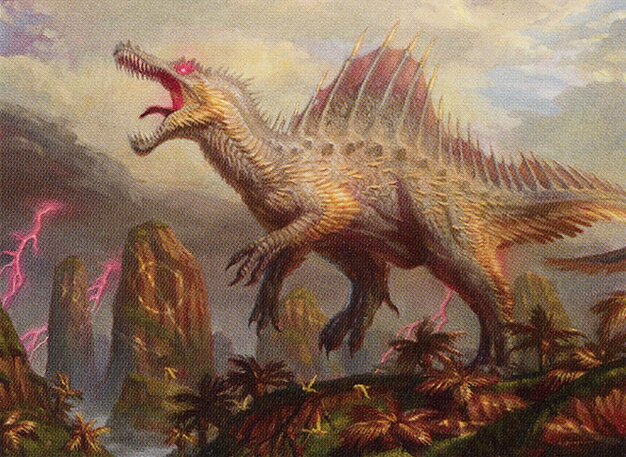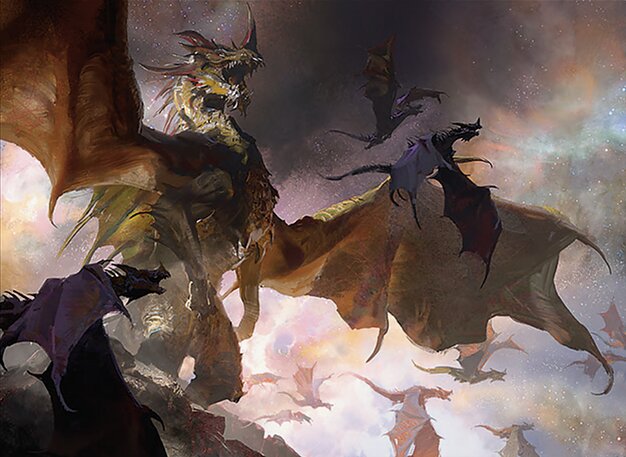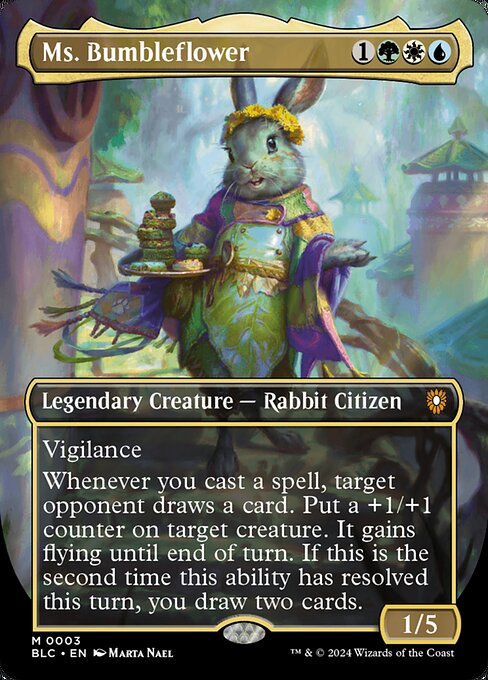Deck & Commander Strategies

Ms. Bumbleflower
Focuses on casting lots of spells and generating card draw triggers to fuel an artifact-centric combo or value engine, using counters to ramp artifact deployment and control the board.

Etali, Primal Conqueror
Leverages Etali's ability to cast spells from opponents' decks for repeated disruption and value, aiming to generate tempo and out-resource opponents through aggressive spellcasting.

The Ur-Dragon
A dragon tribal deck that ramps into powerful dragons from the command zone and the library, aiming to overwhelm opponents with large creatures and synergistic dragon tribal effects.

Breya, Etherium Shaper
Utilizes artifact synergies and combo potential, combining artifacts and Breya's abilities to control the board, generate value, and assemble game-ending combos.
Gameplay Insights
- 1
Ms. Bumbleflower's early use of Joyra to generate ingenuity counters allowed rapid artifact deployment, accelerating card draw and board development.
- 2
Etali's strategy of casting spells off opponents' decks was a recurring theme, creating tension and forcing opponents to adjust their plays.
- 3
The team-up against The Ur-Dragon player shaped the pacing and strategic choices, with other players coordinating to limit his ability to stabilize.
- 4
Artifact synergies combined with card draw engines like Skullclamp led to explosive turns that pressured the board state significantly.
- 5
Adjusting the Ur-Dragon deck for banned cards like Manic Crypt changed ramp timing and resource availability, impacting early-game development.
Notable Cards
-

Skullclamp
Gameplay Summary
The game opened with a typical multiplayer setup featuring Ms. Bumbleflower, Etali, Primal Conqueror, The Ur-Dragon, and Breya, Etherium Shaper as commanders.
Early turns saw ramp and card advantage plays, with players developing their mana bases and deploying key utility creatures like Joyra, Ageless Innovator to accelerate artifact strategies.
The Ms. Bumbleflower player leveraged ingenuity counters and artifact synergies to quickly establish board presence with cards like Skullclamp.
Meanwhile, Etali aimed to capitalize on casting spells off opponents' decks for repeated value, though his deck was described as lacking powerful individual cards. Brian, piloting The Ur-Dragon, was the primary target of the other three players teaming up against him, which influenced the flow and aggression in the game.
The Ur-Dragon deck was updated to adjust for banned cards like Manic Crypt but retained its classic dragon tribal synergy and late-game power.
The game progressed with tension around board wipes or removal spells that could swing momentum, and the players navigated resource management carefully.
The key turning point revolved around the interaction of artifacts and card draw engines creating explosive turns, while The Ur-Dragon player sought to stabilize and mount a decisive offensive with powerful dragons from the command zone or library.








































![Commander Randomizer Part 2 [Commander VS 316] | Magic: the Gathering Commander Gameplay thumbnail](https://i.ytimg.com/vi/okRK1jVYfno/sddefault.jpg)
